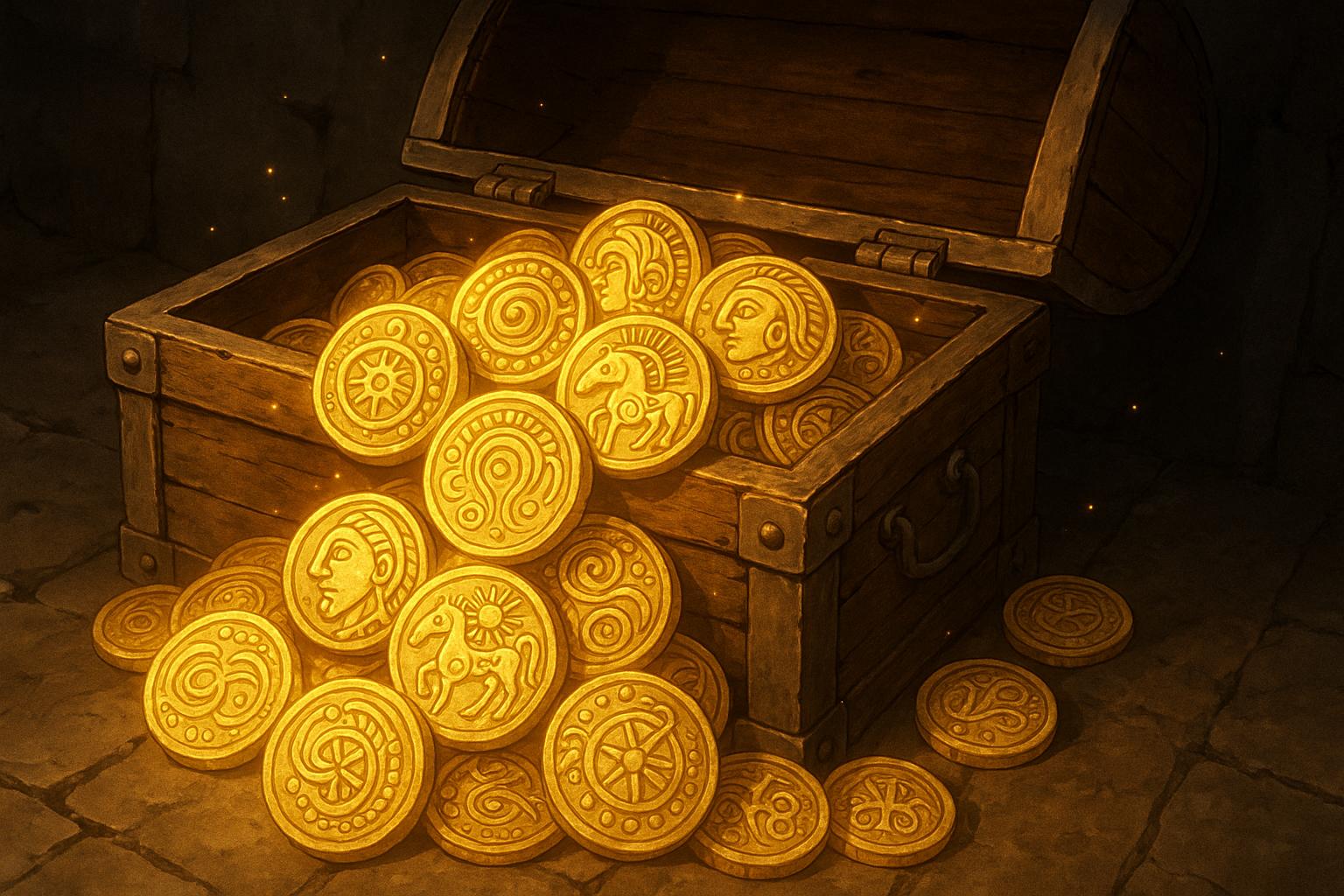In a remarkable unveiling, British authorities have announced the discovery of what is being hailed as the largest Iron Age coin hoard ever found in the UK. Titled the Great Baddow Hoard, this extraordinary collection has already begun to reshape our understanding of the era and the socio-political dynamics at play during a time of monumental change, particularly during Julius Caesar's second invasion of Britain in 54 BC.
The hoard comprises an astonishing 933 gold coins, predominantly Eastern British staters, with 930 of these coins representing a rare glimpse into a period when local tribes transitioned from importing foreign coinage to minting their own currencies. This transformation marked a significant shift in economic life and trade practices among the indigenous tribes. According to Claire Willetts, Curator at the Museum of Chelmsford, these coins not only contribute to our understanding of Trinovantes and Catuvellauni tribes but also provide the first substantial archaeological evidence corroborating Roman historical accounts of hostilities and exchanges between Iron Age communities.
The sheer volume of coins raises intriguing questions about their intended purpose, with many experts suggesting that the hoard may have served as a tribute to Julius Caesar. This notion is supported by the apparent context of conflict between the tribes, alongside evidence of westward migrations, which correspond to the chaos described in Caesar's writings. As such, the hoard may not merely be a financial reserve but also a symbol of political allegiance or conflict resolution during a turbulent period.
Local significance is underscored by Chelmsford City Councillor Jennie Lardge, who articulated that “Not a lot is known about Chelmsford’s Iron Age history, and the Great Baddow Hoard helps us fill some of the gaps in the archaeological record of this period.” This local perspective enhances the broader historical narrative, marking Chelmsford as a pivotal location in understanding Britain’s Iron Age legacy. The museum’s acquisition of the hoard was facilitated by a significant £250,000 grant from The National Lottery Heritage Fund and contributions from local organisations, designed to enhance community engagement and ongoing research.
While the discovery itself is a momentous occasion, it also serves as a cautionary reminder regarding responsible practices in archaeology. The detectorist who unearthed the hoard did so without proper permission and neglected to declare the finding according to the Treasure Act 1996. This oversight led to the finder facing charges related to attempted theft and failure to notify the coroner, ultimately resulting in no reward for the individual, who was instead denied recompense as the landowner received the full benefit of the find.
Anticipation is building as the hoard prepares for public exhibition, with plans for a temporary display in the summer of 2026 followed by a more permanent showcase from spring 2027. Lori Rogerson, the Essex Finds Liaison Officer, expressed enthusiasm about the public's future encounters with the coins: “Visitors seeing the hoard at the Museum of Chelmsford will be in awe at its size and gold content.” The impending exhibition promises not only to enthral but also to inspire contemplation about the lives of those who buried these treasures, the circumstances surrounding their concealment, and the relationships between the tribes involved.
The Great Baddow Hoard thus emerges as a significant archaeological find with invaluable implications for our understanding of Iron Age Britain and the complexities of the interactions between indigenous tribes and Roman authority, as well as illuminating the rich tapestry of Chelmsford’s historical narrative. As the narrative unfolds, it becomes evident that this collection not only highlights ancient financial practices but serves as a testament to the enduring legacy of the period’s vibrant culture and political intricacies.
Reference Map
- Paragraph 1: [1]
- Paragraph 2: [1]
- Paragraph 3: [1], [2]
- Paragraph 4: [1]
- Paragraph 5: [1], [5]
- Paragraph 6: [1]
- Paragraph 7: [1], [3]
Source: Noah Wire Services
